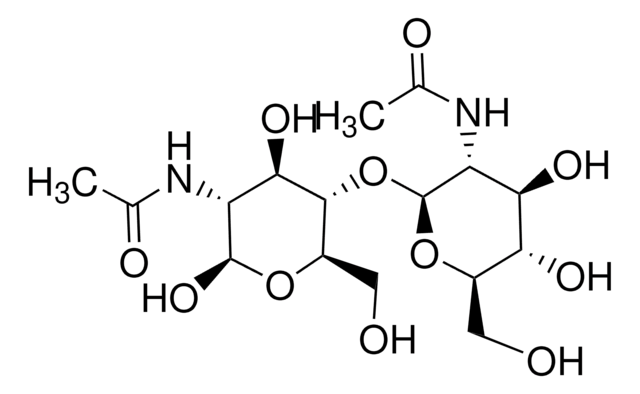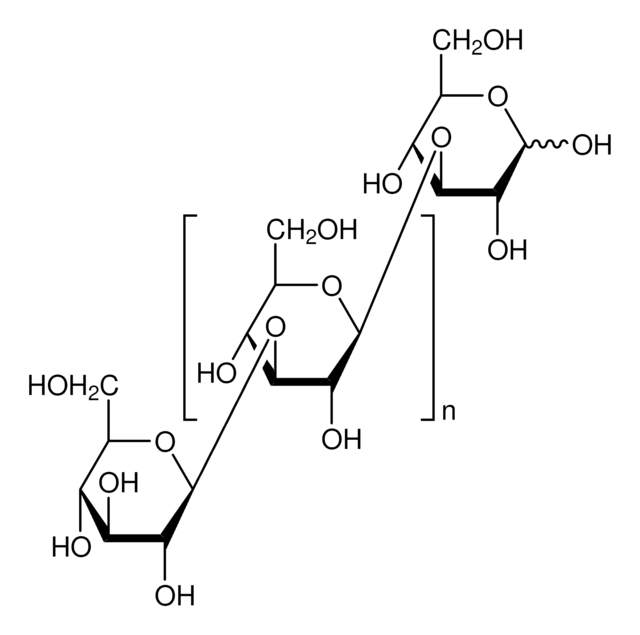Key Documents
A3007
N-Acetylmuramic acid
≥98% (TLC)
Synonim(y):
(R)-2-(Acetylamino)-3-O-(1-carboxyethyl)-2-deoxy-D-glucose, 2-Acetamido-2-deoxy-3-O-(D-1-carboxyethyl)-D-glucopyranose, MurNAc, NAMA
About This Item
Polecane produkty
pochodzenie biologiczne
synthetic
Poziom jakości
Próba
≥98% (TLC)
Postać
powder
metody
thin layer chromatography (TLC): suitable
zanieczyszczenia
≤1 mol/mol methanol
kolor
white
mp
125 °C ((257 °F ))
rozpuszczalność
water: 50 mg/mL, clear, colorless
temp. przechowywania
2-8°C
ciąg SMILES
CC(O[C@H]1[C@H](O)[C@@H](CO)OC(O)[C@@H]1NC(C)=O)C(O)=O
InChI
1S/C11H19NO8/c1-5(11(18)19)20-10(9(17)8(16)4-14)7(3-13)12-6(2)15/h3,5,7-10,14,16-17H,4H2,1-2H3,(H,12,15)(H,18,19)/t5-,7+,8-,9-,10-/m1/s1
Klucz InChI
SOARVSUSWULNDI-TVVSKHENSA-N
Szukasz podobnych produktów? Odwiedź Przewodnik dotyczący porównywania produktów
Zastosowanie
Opakowanie
Inne uwagi
Hasło ostrzegawcze
Warning
Zwroty wskazujące rodzaj zagrożenia
Zwroty wskazujące środki ostrożności
Klasyfikacja zagrożeń
Acute Tox. 4 Oral - STOT SE 2
Organy docelowe
Eyes,Central nervous system
Kod klasy składowania
6.1C - Combustible acute toxic Cat.3 / toxic compounds or compounds which causing chronic effects
Klasa zagrożenia wodnego (WGK)
WGK 3
Temperatura zapłonu (°F)
Not applicable
Temperatura zapłonu (°C)
Not applicable
Środki ochrony indywidualnej
Eyeshields, Faceshields, Gloves, type P2 (EN 143) respirator cartridges
Certyfikaty analizy (CoA)
Poszukaj Certyfikaty analizy (CoA), wpisując numer partii/serii produktów. Numery serii i partii można znaleźć na etykiecie produktu po słowach „seria” lub „partia”.
Masz już ten produkt?
Dokumenty związane z niedawno zakupionymi produktami zostały zamieszczone w Bibliotece dokumentów.
Klienci oglądali również te produkty
Nasz zespół naukowców ma doświadczenie we wszystkich obszarach badań, w tym w naukach przyrodniczych, materiałoznawstwie, syntezie chemicznej, chromatografii, analityce i wielu innych dziedzinach.
Skontaktuj się z zespołem ds. pomocy technicznej












